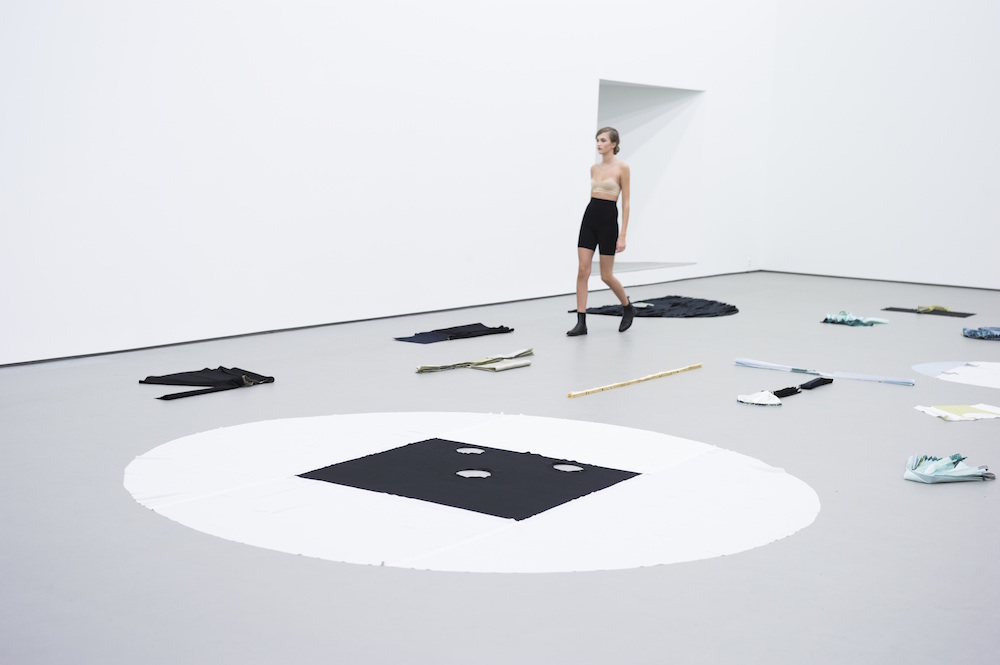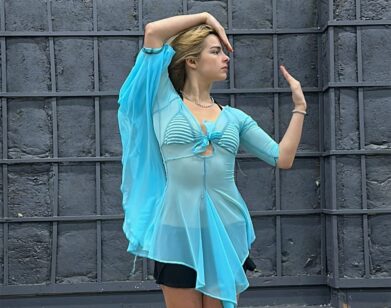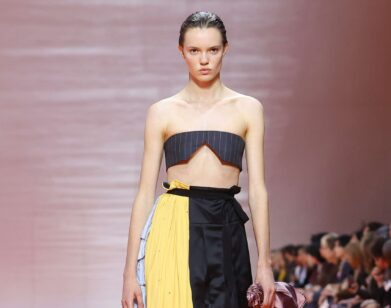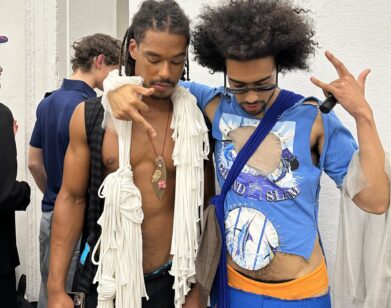Forming Kostas Murkudis
Even as a teenager new to West Germany, after a childhood spent east of the Berlin Wall, Kostas Murkudis recognized fashion’s potent power. “I had to present myself in front of 30 other pupils, and they were all middle class intellectuals, a bit left wing, wearing Chucks, destroyed jeans, track shirts, strange haircuts, stuff like that, and I was the only one who was wearing horrible East German garments made from polyester,” Murkudis recalls. Music, the Berlin youth culture, and magazines subsequently hooked the Dresden-born designer of Greek descent, who left a degree in chemistry for design, and began his career assisting Helmut Lang in 1985.
“Helmut’s brand was like starting from scratch, which was fabulous,” Murkudis says. “It was just the two of us. We lived together, we worked together, and we spent the weekends together as well.” Murkudis’ eponymous mens- and womenswear line, which he started in 1994 after leaving Lang’s label, is one of those conceptual wonders that tends to fly under the radar, but the creative director of Ter et Bantine and Hache is finally getting his due: an exhibition at Frankfurt’s Museum für Moderne Kunst (MMK), running until February, puts his artful garments in conversation with works by John Chamberlain, Dan Flavin, and others, and a new monograph from Prestel, entitled simply Kostas Murkudis, is a carefully curated examination of 30 years of his work.
Murkudis’ work derives its power its varied artistic discipline. Geometry and sculptural form is a constant, as well as his manipulation of materials (his Spring/Summer ’14 collection was shown with all garments laid out in shapes on the floor, with the models putting pieces on as they walked on the runway). The effortlessness of the silhouette is deceivingly facile; Murkudis works to make his clothing’s complexities appear simple, and treats each collection as a laboratory experiment. “I’m always being called a minimal designer, which I don’t think is the right expression for my work,” he notes with a laugh.
Of his process, the designer says, “You’re going to see things, and then the next step is to touch: this is warm, this is cold, this is slippery. You get attracted. You get excited. Then there’s also the idea of a story to tell, whether it comes from the reference of a movie or a book, or something that comes into my mind when I touch a certain fabric. The research starts immediately. You’re collecting as much as possible: information; materials; inspiration, all the time.”
That diffuse material is the crux of Murkudis’ new monograph, which catalogs not just his archival collections, but also ads, ephemera, backstage Polaroids, material studies, interviews, and photography from Mark Borthwick and Katja Rahwles. It’s an offbeat volume, true to Murkudis’ slick design sensibility, that works as a dossier of his specific creative process. Murkudis says, “I try to stay on the path which I’ve chosen, stay true to my ideas, and try to tell a story.”
KOSTAS MURKUDIS IS OUT NOW, FROM PRESTEL.







